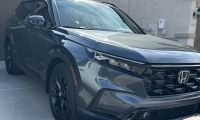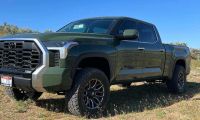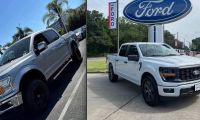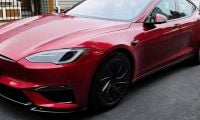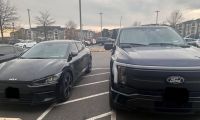We are
— Elon Musk (@elonmusk) October 21, 2021
Tesla Safety as a Brand Differentiator
Tesla is well known for having the most safe cars you can buy. In fact, we wrote about the safety of Tesla vehicles.
With the eventual widespread use of autonomous software for vehicles, and the eventual transition and saturation of electric vehicles, Tesla needs something that differentiates it from its competitors. And that features is safety. Everyone wants to be safe while they drive and know that the car they are driving has been tested in a variety of scenarios.
You can read this report of the safety of the Model S, Model X, and Model 3 vehicles as tested by NHTSA. NHTSA is the National Highway Traffic Safety Administration. They are considered the standard by which vehicles are judged by today. Tesla had the top 3 safest vehicles according to that NHTSA report. Safety matters and Elon Musk focuses heavily on it.
What are the Safety Features of FSD?
Now that we know safety matters for Tesla vehicles, let's talk about what the safety features are for FSD and Tesla vehicles. You can find all of this safety information on Tesla's website and Tesla does a great job demonstrating their safety features with pictures, diagrams, and clear descriptions. I've simplified them here:
Safety-First Design
Tesla vehicles are engineered to be the safest in the world. Each one combines powerful onboard technology with an all-electric design to help protect every driver, passenger and pedestrian on the road.
Design From the Ground Up
Engineered with an all-electric architecture, Tesla vehicles provide a very low probability of rollover risk and occupant injury.
Battery Pack
The position and weight reduce rollover risk and improve emergency avoidance handling
Impact Protection
A patented side sill structure supports the chassis to absorb impact energy and protect occupants and battery
Structural Integrity
The rigid body and fortified battery help to reduce and prevent cabin intrusion
Crumple Zones
Large empty spaces in the front and rear soften impact, reducing risk of occupant injury
Advanced Airbags
Less cabin intrusion helps preserve space for airbags to fully inflate and protect passengers
Hardware
Exceptional Awareness
Eight cameras provide 360 degrees of visibility while twelve ultrasonic sensors can detect both hard and soft objects, including surrounding vehicles.
Active Safety Features for Every Tesla
Powered by Tesla's Autopilot technology, active safety features can help reduce impact severity or prevent accidents from happening altogether.
Forward Collision Warning
Provides visual and audible warnings of impending collisions with vehicles or obstacles
Blind Spot Collision Warning
Warns when a possible collision is detected with a vehicle or obstacle in your blind spot
Lane Departure Avoidance
Applies corrective lane-centering steering if a potential collision or unintended lane departure is detected
Lastly, there is thermal protection in the unlikely event of a fire:
In the rare case of damage, Tesla battery packs are designed to spread heat away from the occupant cabin and battery, helping to prevent fires and protect occupants. From 2012 to 2020 in the US, Tesla vehicles were approximately ten times less likely to catch fire per mile driven compared to average gas vehicles.
You can view more information about accident reports for Tesla vehicles on Tesla's website.
Tesla Safety Features for the Future
Tesla won't stop with its current safety features. I believe more and more is going to be done to make Tesla vehicles the safest vehicles you can buy and ride in. That includes making the frames of the cars stronger and more capable of withstanding a collision. There has been reports of people surviving crashes and the reason that they did so was because they were driving a Tesla:
@WholeMarsBlog Our first Tesla bought in 2013 was totaled in a rear end high speed hit on 118 Freeway in 2015. Car saved us. Became a “diehard” Tesla fan. Bought 5 more Teslas ever since in the family and have been munching on Tesla stock all the way through 2020. pic.twitter.com/3fJAd3gWq7
— Ash Reddy (@AshReddy7) October 22, 2021
Of course, if you are driving 90 miles an hour and run into a tree, I don't think there's much Tesla can do to prevent an injury or more in that situation - at that point it's on the driver to take better care of things. But I'd say the first thing Tesla will continue to do is do safety tests and look for more ways to strengthen the frame of the vehicle overall and minimize impact.
The second will be continued advancements in safety features. Right now, FSD may not notice a construction sign. I saw a video of Rob Mauer from Tesla Daily driving with FSD Beta and at the beginning of the drive, the car was headed toward a construction marker. As the neural net gets trained and becomes better at what it does, the car will be able to see and recognize situations and avoid them. The car already has numerous safety features to help the owner of the car avoid an accident.
Lastly, besides the frame of the car and the neural net being trained to better recognize dangerous situations, Tesla will keep improving its safety score and helping other drivers learn to drive better. Bring a safe driver is really more about driving defensively and avoiding situations that would be dangerous. For the most part, that is avoiding close following, unintended acceleration, fast turns, and anything out of the ordinary while driving.
What do you think of Tesla's safety features? Are they what differentiates Tesla from other auto makers? Or does Tesla have many other things besides safety that makes Tesla stand out?
Leave your comments below, share the article with friends and tweet it out to your followers.
Jeremy Johnson is a Tesla investor and supporter. He first invested in Tesla in 2017 after years of following Elon Musk and admiring his work ethic and intelligence. Since then, he's become a Tesla bull, covering anything about Tesla he can find, while also dabbling in other electric vehicle companies. Jeremy covers Tesla developments at Torque News. You can follow him on Twitter, Facebook, LinkedIn and Instagram to stay in touch and follow his Tesla news coverage on Torque News.








